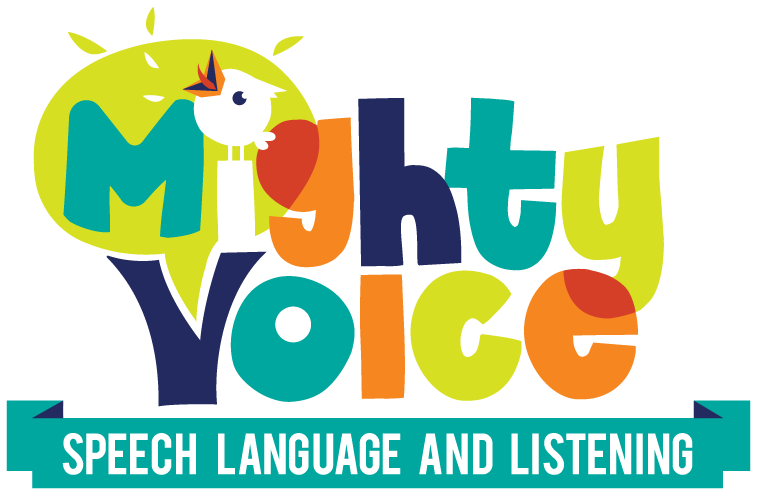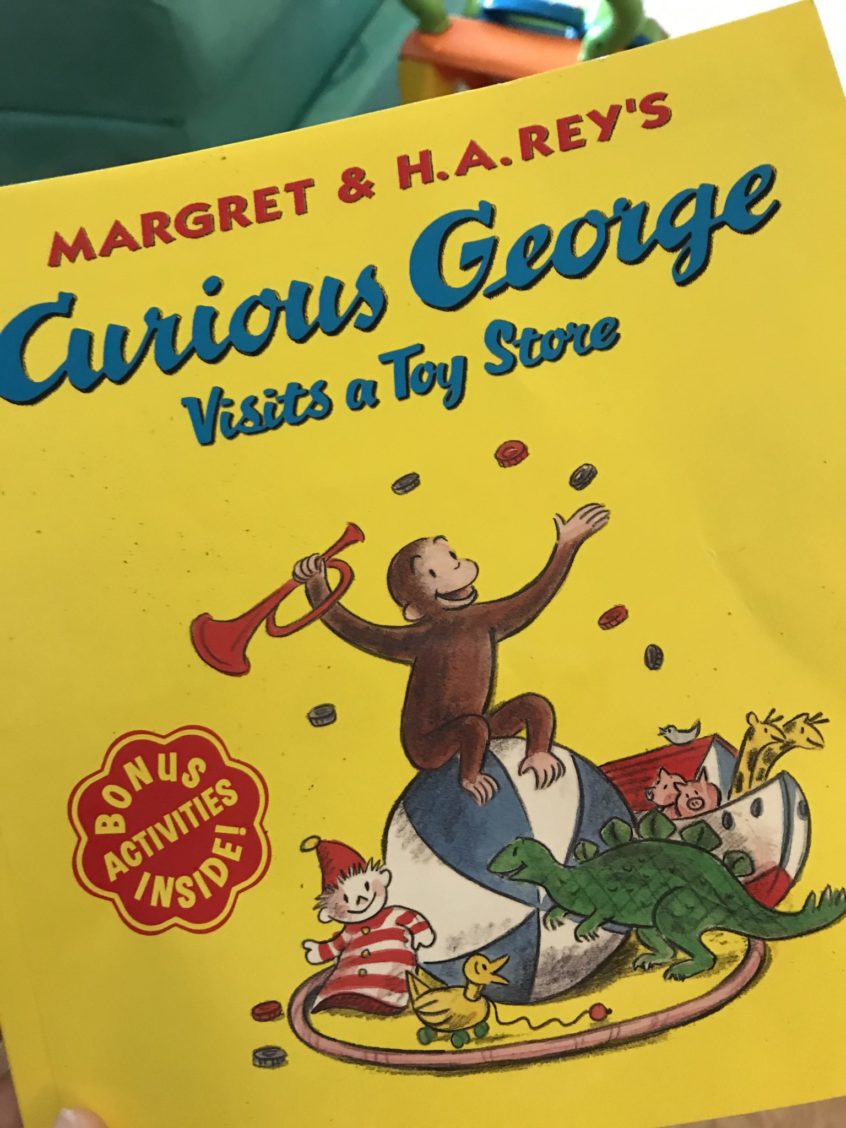When was the last time you worked the word “commotion” into a conversation with your toddler? Or “lowered” or “delighted”? Don’t worry, I haven’t either.
But, because of a Curious George book we accidentally brought home from my parents’ house, we’ve been reading them. I’ve mentioned before that I love using books in therapy, and we’ve all heard that we need to be reading to our kids (those with and without hearing loss), so today I’m going to dig a little deeper into “why.”
First, there is so much vocabulary in books that our kids might not otherwise hear. I made a quick list paging through the Curious George book of all of the words I don’t think my toddler has heard before, except from this book:
- wound (the line wound around the corner)
- hula hoop
- exclaimed
- lowered
- delighted
- puppet
- cheered
- commotion
- immediately
- success
In addition to the new vocabulary, there’s a bunch of grammar stuff that only the nerdiest of us would notice, but I’ll point it out in case anyone else is interested. If you want to skip the grammar terms, the main idea is this–in a book your child is exposed to tons of rich and complex language that comes from something that is well written. Here are some of the grammatical constructions I noticed:
- A variety of complex, compound, and simple sentences
- Comparative forms–higher/highest
- Embedded phrases and clauses
- A variety of prepositions and location words
Also important to everyone, and especially kids with hearing loss who may not be able to overhear as much conversation as other children, is some of social-emotional and nonliteral “stuff” you get in books.
In this story, George is curious about everything in the toy store, and at first the owner is annoyed. Then, she gets angry with George because she feels like he’s messing up her store. Near the end of the book, a little girl tells her father how much she’s enjoyed the store, and the father tells the store owner what a great idea it was to have a monkey work in the store. At that point, the owner thanks George for being a great help to her, and gives him an apron of his own.
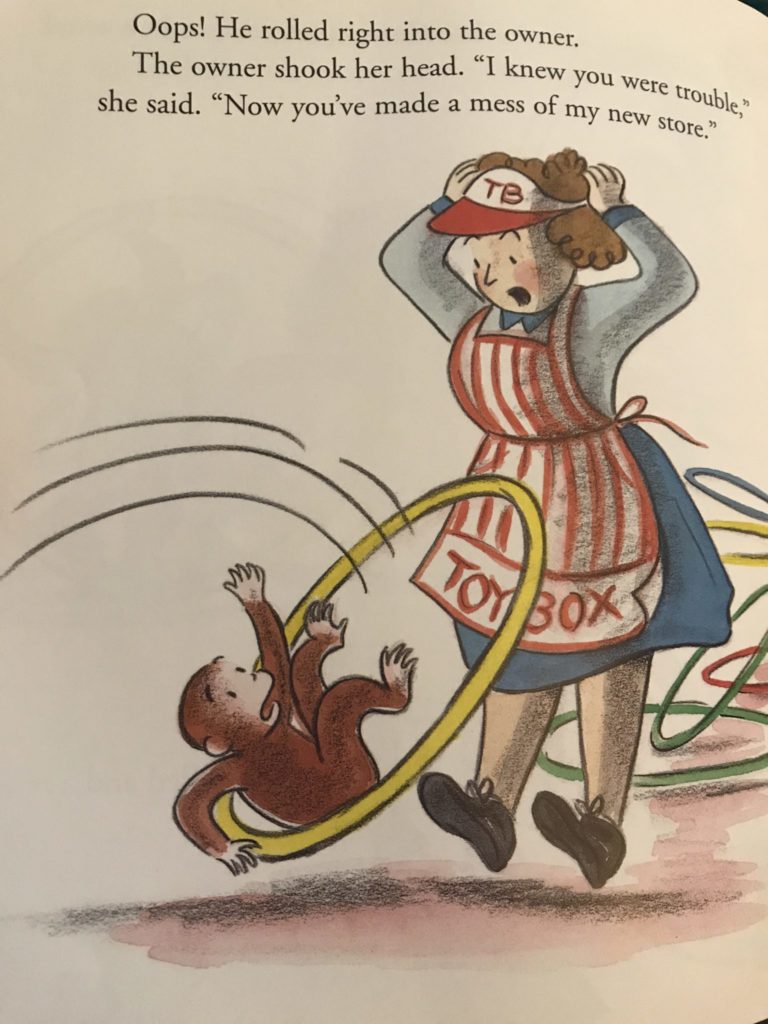
Shocked and surprised 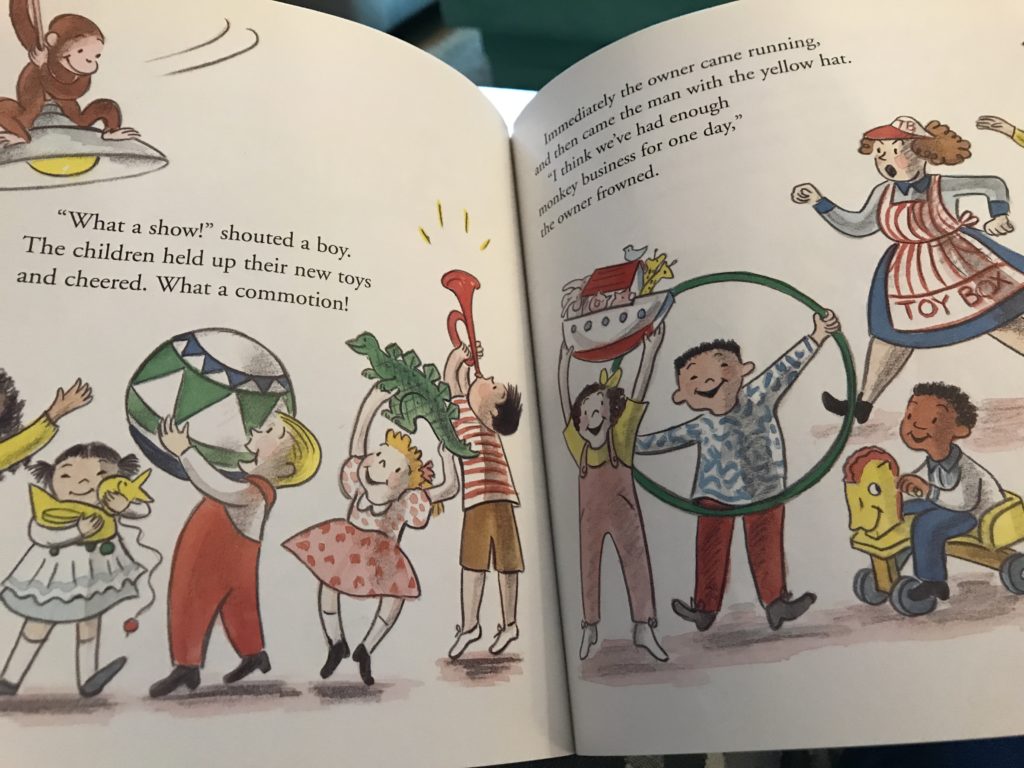
Angry 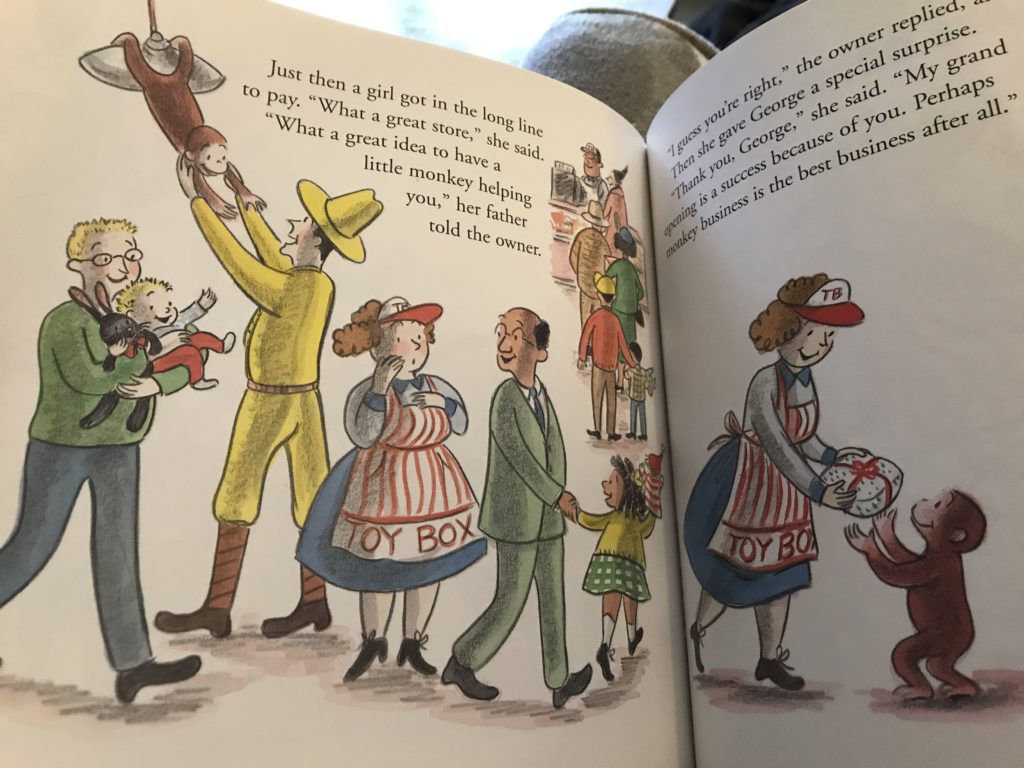
Thinking…and finally pleased and happy
This gave us a great opportunity to talk about feelings and theory of mind (the idea that other people have thoughts and feelings that are different than yours). We’d already read the book together a few times, and I pointed to the store owner’s face and asked my toddler “How is she feeling?” He hadn’t really connected her face with feelings at that point, but after labeling her feelings, he started to tell me, saying “her mad cause George made a mess!” He was starting to connect the characters’ feelings with their faces, a key component of developing age appropriate social language and skills, as well as empathy for others.
Curious George Visits a Toy Store is only 24 pages long, with a few sentences on each page. But, as you can see, it is packed with rich language that our children need. And if we build their love of reading early, they can benefit from the richness of language filled stories for the rest of their lives.
